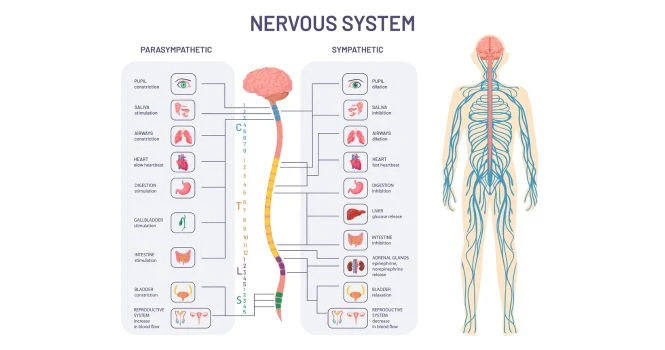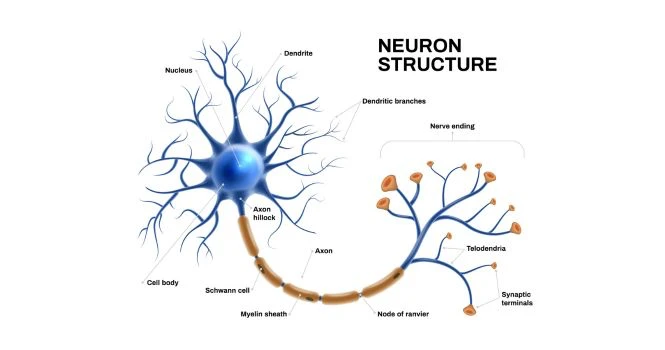Nervous System, which primarily controls all the activities of the body is divided into,
- Central Nervous System
- Peripheral Nervous System
Central Nervous System includes the brain and spinal cord.
Peripheral Nervous System is divided into somatic nervous system and autonomic nervous system.
Central Nervous System
Brain and spinal cord are made up of two layers namely gray matter and white matter.
Gray matter is formed by nerve cell bodies and proximal part of nerve fibres, arising from nerve cell body, while white matter is formed from remaining part of nerve fibre.
In brain, the white matter is placed in the inner part and gray matter placed on outer part, while in the spinal cord, the gray matter on outside while the white matter inside.
Peripheral Nervous System
It consists of 12 cranial nerves and 31 pairs of spinal nerves.
Somatic Nervous System, a part of (PNS), deals with our voluntary control of muscles and our five senses: vision,hearing,taste,smell and touch.
Autonomic nervous system (ANS) deals with involuntary actions, such as digestion, salivation, perspiration,heart rate and the “fight or flight” response. This in turn is divided into
- Sympathetic division
- Para sympathetic division.
Network of somatic nerves are formed throughout the body when they branch off from nerve roots in spinal column.
When such a nerve is compressed or damaged for any reason, then that can lead to numbness and tingling sensation, loss of movement , burning and pain in the area that corresponds to that somatic nerve.
Common causes of nerve impingement include:
- Herniated disc
- Degenerative disc disease
- Bulging disc
- Spinal stenosis













